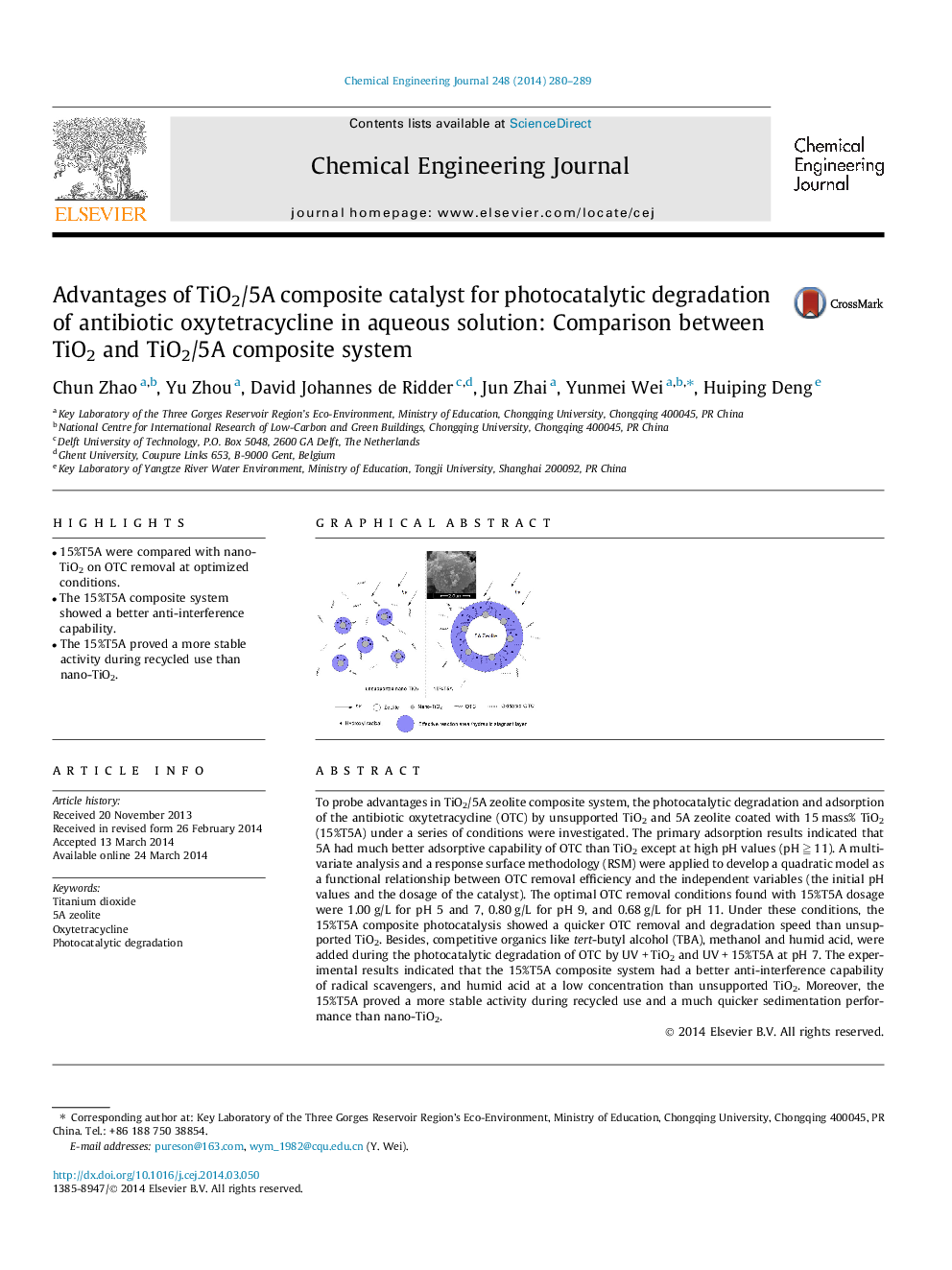| Article ID | Journal | Published Year | Pages | File Type |
|---|---|---|---|---|
| 147494 | Chemical Engineering Journal | 2014 | 10 Pages |
•15%T5A were compared with nano-TiO2 on OTC removal at optimized conditions.•The 15%T5A composite system showed a better anti-interference capability.•The 15%T5A proved a more stable activity during recycled use than nano-TiO2.
To probe advantages in TiO2/5A zeolite composite system, the photocatalytic degradation and adsorption of the antibiotic oxytetracycline (OTC) by unsupported TiO2 and 5A zeolite coated with 15 mass% TiO2 (15%T5A) under a series of conditions were investigated. The primary adsorption results indicated that 5A had much better adsorptive capability of OTC than TiO2 except at high pH values (pH ≧ 11). A multivariate analysis and a response surface methodology (RSM) were applied to develop a quadratic model as a functional relationship between OTC removal efficiency and the independent variables (the initial pH values and the dosage of the catalyst). The optimal OTC removal conditions found with 15%T5A dosage were 1.00 g/L for pH 5 and 7, 0.80 g/L for pH 9, and 0.68 g/L for pH 11. Under these conditions, the 15%T5A composite photocatalysis showed a quicker OTC removal and degradation speed than unsupported TiO2. Besides, competitive organics like tert-butyl alcohol (TBA), methanol and humid acid, were added during the photocatalytic degradation of OTC by UV + TiO2 and UV + 15%T5A at pH 7. The experimental results indicated that the 15%T5A composite system had a better anti-interference capability of radical scavengers, and humid acid at a low concentration than unsupported TiO2. Moreover, the 15%T5A proved a more stable activity during recycled use and a much quicker sedimentation performance than nano-TiO2.
Graphical abstractFigure optionsDownload full-size imageDownload as PowerPoint slide
